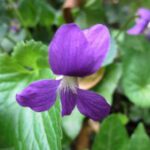flowering onions
If the spirit moves you towards a romanticized view of these lovely spring bulbs let me be the one to shatter your fairy tale: they are called flowering onions. You are growing onions. In the flower border. Onions.
I don’t say that to be obnoxious, I’m sure onions are wonderful plants in their own intensely aromatic way, but just because their more refined relatives spring up giant flower balls, that doesn’t mean their needs and growth habits are much different. I’m grateful that the giant allium doesn’t smell, unlike the wild garlic and the chives. Silver lining – rodents don’t like the taste of onion, ornamental or no, so they will leave them alone.
By the way, true onions and leeks have beautiful flowers too if you allow them to bloom, maybe not so large, but surprisingly similar to those of the giant alliums.
In keeping with the ancient deity theme, onions, garlics and leeks also date back to the time of the pyramids, and in Egypt leeks were so revered that people used to swear by them, like they would by the gods.
If the family history didn’t dissuade you from proudly displaying them in your garden, plant allium bulbs mid-fall, with the daffodils and the tulips, in a well drained location with full sunshine. And that’s pretty much it. The advice is to deadhead them before they go to seed, to prevent self-sowing. I wish mine ever did, besides the seed head is almost as pretty as the flower itself in its surreal alien vegetation beauty.
If you fertilize your flower beds they certainly won’t need additional food, and even though they will be receiving an adequate amount of water by virtue of their proximity to more sensitive plants, they tend to be quite drought resistant in my experience.




 Previous Post
Previous Post Next Post
Next Post




